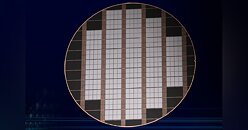legcramp
[H]F Junkie
- Joined
- Aug 16, 2004
- Messages
- 12,401
https://www.techpowerup.com/291142/...tomer-a-usd-3-3-billion-crypto-mining-startup
Just a few days ago, we reported that Intel is preparing to unveil the company's first application-specific integrated circuit (ASIC) dedicated to mining cryptocurrency. To be more specific, Intel plans to show off its "Bonanza Mine" ASIC at the 2022 ISSCC Conference, describing the chip as "ultra low-voltage energy-efficient Bitcoin mining ASIC." We have yet to see how this competes with other industry-made ASICs like the ones from Bitmain. However, it seems like the startup company GRIID, valued at around $3.3 billion, thinks that the Bonanza Mine ASIC is the right choice and has entered a definitive supply agreement with Intel.
According to the S-4 filing, GRIID has "entered into a definitive supply contract with Intel to provide ASICs that we expect to fuel our growth. The initial order will supply units to be delivered in 2022 and GRIID will have access to a significant share of Intel's future production volumes." There are a few other mentions of Intel in the document, and you can see another exciting tidbit below.
GRIID S-4 FilingOn September 8, 2021, GRIID entered to a supply agreement (the "Intel Supply Agreement") pursuant to which GRIID may purchase Intel-designed BZM2 ASICs. The Intel Supply Agreement is for an initial four-year term and will automatically renew thereafter for one period unless either party provides at least 90 days' notice prior to the end of the initial four-year term. The Intel Supply Agreement provides GRIID with fixed pricing for the BZM2 ASICs for all orders placed prior to May 2023. In addition, subject to certain conditions, GRIID will be entitled to purchase from Intel at least 25% of all qualified Intel-designed ASICs through approximately May 2025.
![[H]ard|Forum](/styles/hardforum/xenforo/logo_dark.png)
